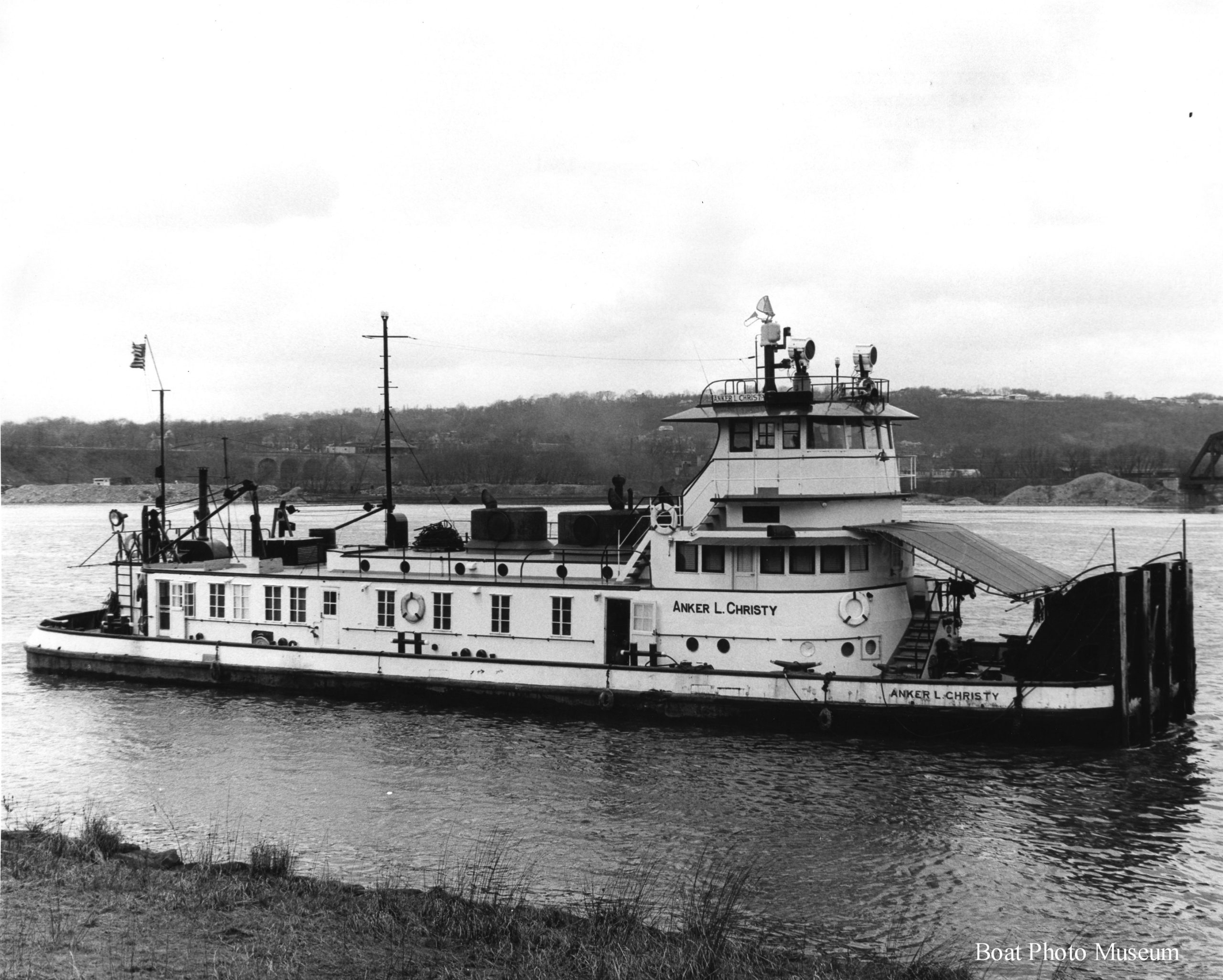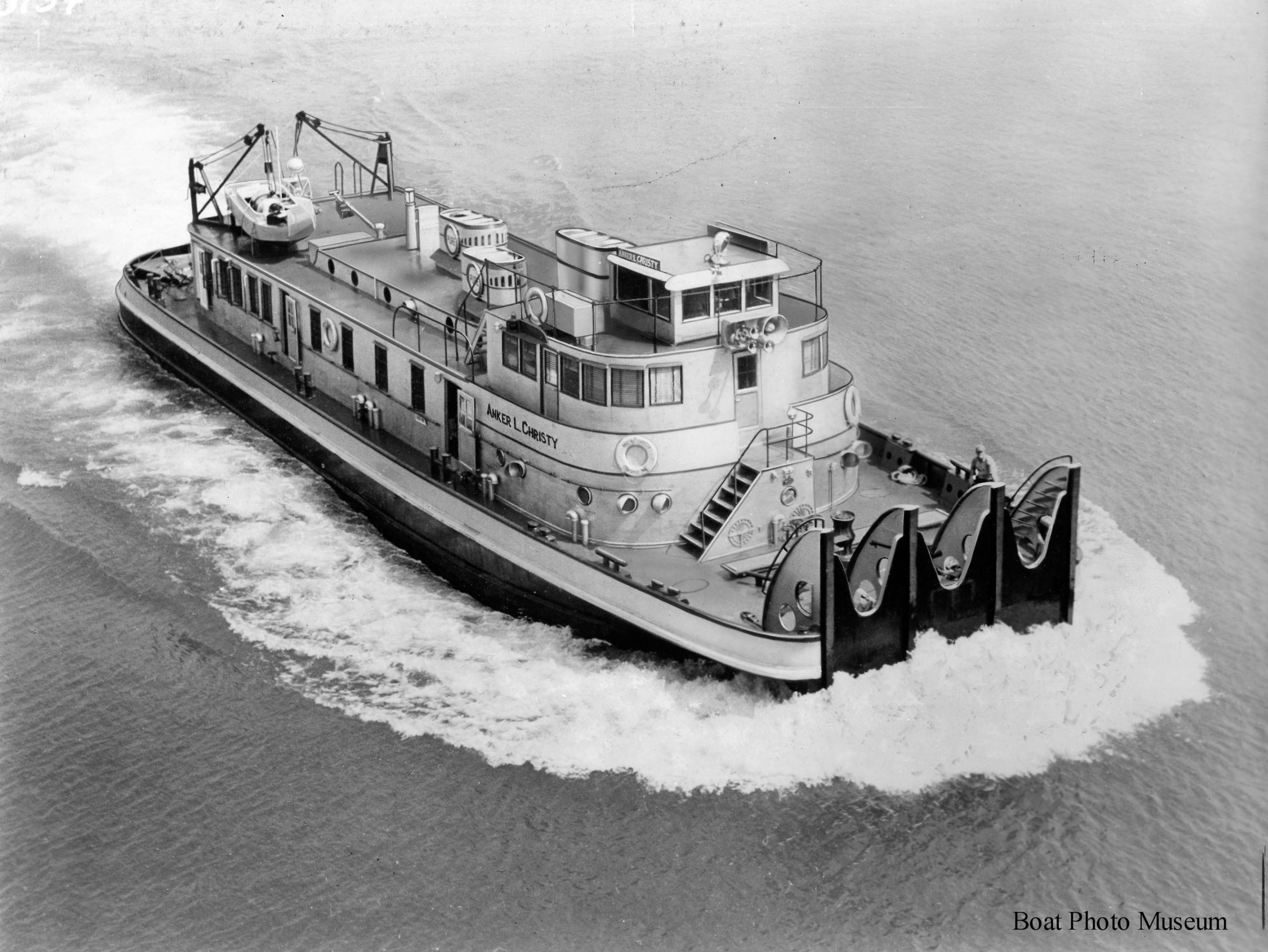In the last column, we looked at the first of three towboats named Kay D. St. Louis Ship built the first in 1940 for the Marine Transportation Company (MTC) of Dyersburg, Tenn. The original owner would operate that single-screw, 800 hp. vessel for 32 years, virtually unchanged. The same Fairbanks-Morse model 37E14 direct reversing diesel was still propelling it along when it was sold to new owners in 1972.
MTC did not have a new vessel built to replace the Kay D, choosing rather to purchase a used boat that was bigger than the Kay D (and nearly as old). The newly acquired boat was built by Sturgeon Bay Shipbuilding & Drydock Co., Sturgeon Bay, Wis., in 1941. Sturgeon Bay Shipbuilding had been formed in 1926 by incorporating assets from two earlier area firms: Sturgeon Bay Dry Dock Company and Universal Shipbuilding Company.
In 1941, Sturgeon Bay built the first of several boats the company would construct over the years for Pure Oil, all designed by marine architect A.M. Deering of Chicago. Prior to this new boat coming out, Pure operated several smaller diesel boats, including the sternwheelers D.L. Gilland and R.H. McElroy Jr., and the 120 hp. single-screw Dan E. Sullivan. Pure Oil was organized in 1895 by independents seeking to counter the dominance of the Standard Oil Company. The company was sold to the Ohio Cities Gas Company, which in 1920 consolidated all its operations under the Pure Oil banner and moved the headquarters to Chicago.
The new boat that Deering designed for Pure in 1941 was significant for both the company and the river industry. While not as large as other boats turned out by some inland shipyards of the time, it was touted in the pages of The Waterways Journal as “the largest boat on the rivers with triple-screw propulsion.” The hull was 108 feet by 30 feet and had 1,200 hp. from three Cooper-Bessemer GN-8 diesels, each producing 400 hp. at 430 rpm. They turned propellers or “wheels” supplied by Kahlenberg that were 62 inches in diameter. The two outboard wheels had 38 inches of pitch, while the center wheel carried 40 inches of pitch. The engines were pilothouse controlled by “new Sperry navy-type” controls.
The four steel towknees on the head of the boat were not faced with the usual wood but had “Goodrich rubber” attached to the fronts. Another significant feature was the pilothouse itself. While the rest of the superstructure had graceful lines with rounded corners, the pilothouse was small and severely square. It could be raised and lowered several feet into the cabin by means of an outside frame. Three low, stylish smokestacks were mounted atop an engine room skylight on the second deck. Two were situated abreast of each other while the third was on the centerline behind them.

The boat was named Anker L. Christy in honor of the executive vice president of Pure Oil. After a delivery trip involving a “lake, canal and river” trip, it arrived at St. Louis on August 10, 1941, resplendent in a color scheme of “aluminum or silver” on the cabin bulkheads with blue trim and red decks. The crew consisted of Capt. George S. Vinson as master; Capts. Carroll S. Ware and Francis V. “Jim” Bruno, pilots; Charles Lorch, chief engineer; A.B. Higgs, assistant engineer; Harold Robinson, striker; E.A. Gage, steward; and J.W. Ables, Gus Cook, James Dolan and J.W. Gatewood as tankermen/deckhands.
The Anker L. Christy left St. Louis for Minneapolis on August 11, 1941, with three loads of gasoline totaling some 44,000 barrels. Capts. George Gordon and William E. Nolden were aboard, serving as Upper Mississippi River pilots. At some point, the color of the bulkheads changed to a more traditional white, and the lowering pilothouse was removed, replaced by a stationary structure with a very graceful curved front version, which Deering likely designed.
The boat was seen all over the river system over the years as it delivered product to Pure Oil terminals. Pure sold the vessel in 1960. The next column will deal with the career of the boat from that point. Again, many thanks to Capts. Jeff Yates, Mike Herschler and Tom Waller for sharing their files, photos and memories for these columns.
The recent passing of former President Jimmy Carter brings to mind that Capt. Carroll S. Ware, who was aboard as pilot on the initial trip of the Anker L. Christy, stayed with Pure until he retired as master of the L.W. Sweet (built as the R.H. McElroy in 1950). At 2,900 hp., that vessel was the most powerful towboat Pure Oil ever built. After retirement, Capt. Ware, known by his nickname “Rip,” often could be found working as a pilot on the Str. Delta Queen, and he was serving in that capacity in August 1979 when President Carter and his family made a trip on “Steamboat One.”



